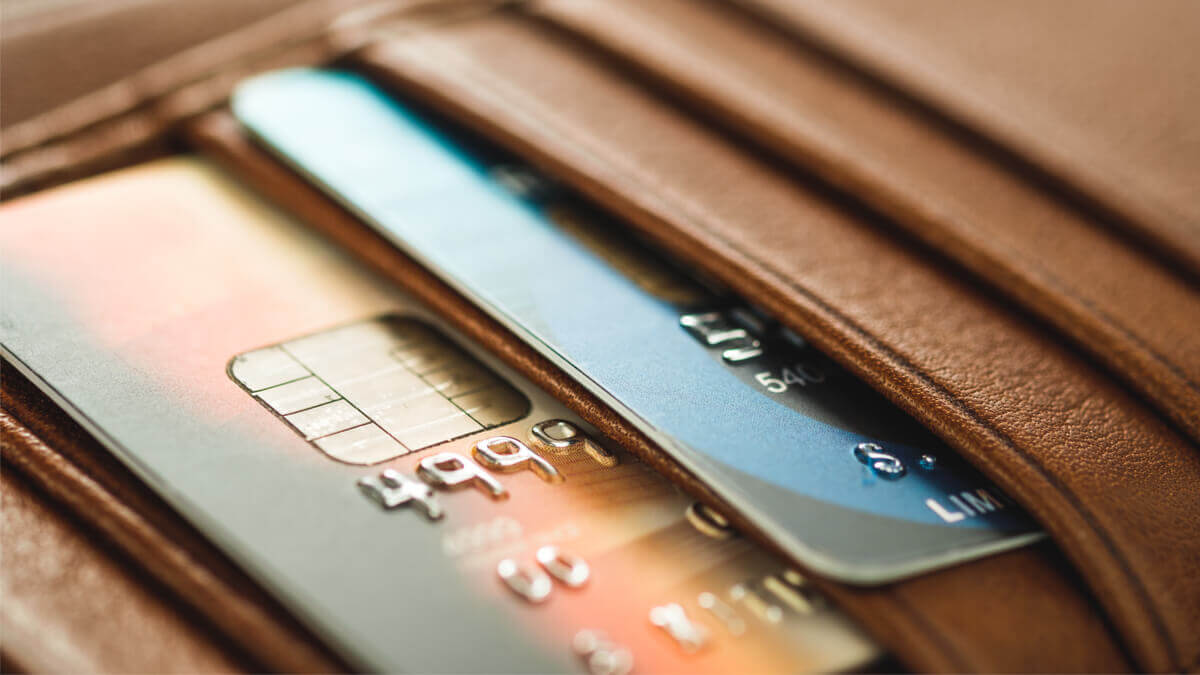Taxes on selling inherited property: Guide for US citizens
Learn how taxes on selling inherited property work as an American – from step-up basis to capital gains, timelines, deductions, and filing tips.

Debit cards can be a convenient way to pay online and in person — as well as giving the option to withdraw cash whenever you need it from an ATM. If you’re considering getting a debit card linked to your checking account, you may be wondering: how do debit cards work?
This guide covers all you need to know including a debit card definition, how debit card payments are processed, and when you might prefer a debit card compared to other payment methods.
We’ll also introduce the Wise Multi-Currency Card as a smart international debit card which can cut the costs of overseas spending and withdrawals.
A debit card is a card you can use for payments and withdrawals at an ATM. You may hear people refer to a debit card simply as a bank card.
Your debit card will be linked to an account — your bank or credit union checking account for example, or an account you hold with an authorized online provider.
When you make a payment or withdrawal using a debit card the funds will be drawn from your linked account, either instantly or within the next day or two. That means you need to make sure you have enough money in your account to pay for anything you purchase — or you may overdraw your account.
Most debit cards look pretty alike. They’re small rectangular pieces of plastic — or occasionally metal — normally with a unique number and security code, and the holder’s name embossed on them.
However, there are a few distinct types of debit cards, including:
While these cards may all offer slightly different features, they’re usually similar in that you can only use them to spend or withdraw up to the balance of the linked account.
You can use most debit cards which have been issued on major networks like Visa®, American Express®, Discover® and MasterCard® internationally. However, you might need to inform your bank or card provider that you’re going to travel overseas to make sure the card isn’t blocked for security reasons.
Different networks have different global coverage, so it’s worth checking which network your card is on and taking a look whether that network is popular in your destination. You’ll find your card’s network by looking for the logo on the card itself — and the network’s desktop site will include coverage information.
There’s one other key consideration when spending with a debit card in a foreign currency — foreign transaction fees. Most bank issued debit cards levy a foreign transaction fee whenever you spend a foreign currency.
That can be when you travel, or when you’re shopping online with a foreign retailer for example. Foreign transaction fees are commonly around 3% and push up the overall costs of using your debit card abroad.
If you love to travel or shop online with international retailers, you could save with a specialist debit card like the Wise Multi-Currency Card. The Wise Multi-Currency Card is linked to a Wise account, which you can top up in USD, and convert to the currency you need using the mid-market exchange rate with no foreign transaction fee. More on that later.
| Please see Terms of Use for your region or visit Wise Fees & Pricing for the most up to date pricing and fee information |
|---|
A debit card can be used to spend or make withdrawals at an ATM, as long as you have the funds in the linked account to cover the costs.
To make a payment in a store you’ll need to first make sure your card’s network is accepted, and tell the merchant you want to pay by card.
Depending on the card you hold, you can then either:
- Tap the payment terminal to make a contactless payment
- Swipe your card to make a magnetic stripe payment
You may be asked to enter your card’s PIN (personal identification number) if you have one, or to sign a receipt for the merchant’s records.
Generally, to withdraw funds from an ATM you’ll simply need to find an ATM terminal which accepts your card type, insert your card into the ATM and enter your PIN. You’ll then be prompted to confirm how much you want to withdraw, and your cash will be dispensed.
If you’re using an ATM it’s important to check if there are any fees from the ATM operator or your own bank. Most banks and card providers have networks of ATMs which offer low or no withdrawal fees — but you may run into costs if you use an out of network or international ATM.
When you spend with your debit card, you’ll usually be spending only the funds you hold in the linked account. That means that, unlike with a credit card, you won’t run into interest costs.
Although you shouldn’t hit interest charges with a debit card, it’s useful to know that some debit cards linked to bank and credit union checking accounts can cause your account to go overdrawn.
This is unusual — but it can happen if you don’t have enough funds in your account, and make one or more purchases which exceed the account balance, before all outstanding purchases have been cleared by the bank¹.
If you accidentally overdraw your account using your debit card, your bank may issue penalty fees until you add more money to your account.
If you love to travel, or shop online with retailers based overseas, you could save money with the Wise Multi-Currency Card. Open a Wise account online or in the Wise app to hold and exchange 50+ currencies, and spend with your card in 170+ countries.
All you need to do is add money in USD³ — or the currency of your choice — to Wise, and then you can spend and withdraw around the world⁴.
If you don’t hold funds in the currency you need for any purchase, your card will automatically convert the balance you hold to the currency you need, with the lowest possible fee, and the mid-market exchange rate.
| Please see Terms of Use for your region or visit Wise Fees & Pricing for the most up to date pricing and fee information |
|---|
The range of fees you can pay when you use a debit card can vary widely based on the type of card you have, and the transactions you make frequently.
To check the exact fees which may apply to your specific card you’ll need to read your card’s terms and conditions — look out in particular for:
When you spend with a debit card you’ll only normally be able to access funds you’ve already deposited in the linked account. There’s no bill to pay later.
If you use a credit card, you’ll be able to spend up to your account credit limit, and the card issuer will send you a bill at the end of the month. You’ll then need to pay back all of your spending by a set date to avoid penalties and interest.
Alternatively, you can pay back only a portion of your bill, and roll over the remainder to the next month — but in this case you’ll pay interest on the outstanding amount.
| Some other notable differences include: |
|---|
|
Not sure if a debit card is for you? Here are some of the key advantages and disadvantages of a debit card to consider.
| ✅ Pros | ❌ Cons |
|---|---|
|
|
Key benefits of a debit card:
Important drawbacks of a debit card:
Before we finish up, let’s look at some common questions about debit cards and how they’re used.
Different banks and card issuers will have their own eligibility requirements, including the age at which you’re able to apply for a debit card.
Many banks will freely issue debit cards to people aged over 16 or 18 years, and can offer specialist cards to younger teenagers and children, with the consent of a parent or guardian.
You can often check your debit card balance most conveniently online or in the card issuer’s mobile app.
Other options could be to call your bank and ask for a balance update, to visit a branch, or to get a statement via an ATM.
To cancel any ongoing payment or subscription you’ve set up with your debit card you’ll need to contact the card issuer.
Many banks offer ways to manage and cancel subscriptions through their online and mobile banking services, so all you’ll need to do is log into your account and end the ongoing payment digitally.
If you need to get a refund to your debit card you may need to wait up to 10 days to see your money deposited back to your account.
If you’re waiting longer than around 14 days it’s worth contacting the card issuer to check if there has been some problem with the refund.
So there you have it. We’ve covered key questions like is a bank card a debit card? What’s the difference between a debit card and a credit card? And how does a debit card work? You’re now well equipped to work out whether a debit card will suit your personal needs.
If you’re going to take the leap and get your first debit card, don’t forget to check out the Wise Multi-Currency Card, for a smart and simple card, with low fees⁵ and no foreign transaction fee when you spend in foreign currencies.
Get an international
debit card in minutes
Sources checked on 02.03.2022
*Please see terms of use and product availability for your region or visit Wise fees and pricing for the most up to date pricing and fee information.
This publication is provided for general information purposes and does not constitute legal, tax or other professional advice from Wise Payments Limited or its subsidiaries and its affiliates, and it is not intended as a substitute for obtaining advice from a financial advisor or any other professional.
We make no representations, warranties or guarantees, whether expressed or implied, that the content in the publication is accurate, complete or up to date.

Learn how taxes on selling inherited property work as an American – from step-up basis to capital gains, timelines, deductions, and filing tips.

Understand taxes on selling rental property as an American – capital gains, depreciation recapture, exclusions, timelines, and filing tips to reduce your bill.

What is the 90 day rule on Airbnb? Learn all about rules and restrictions for using your London-based property to make passive income with short-term rentals.

Have a look at our guide that covers how to manage your Airbnb remotely, from automating the check-in process all the way to handling local regulations.

How much do Airbnb property managers charge? Here's an in-depth overview to find out all about the management fees and charges that might arise.

How to report Airbnb income on tax return? This guide will tell you all about reporting your rental income for both domestic and international properties.